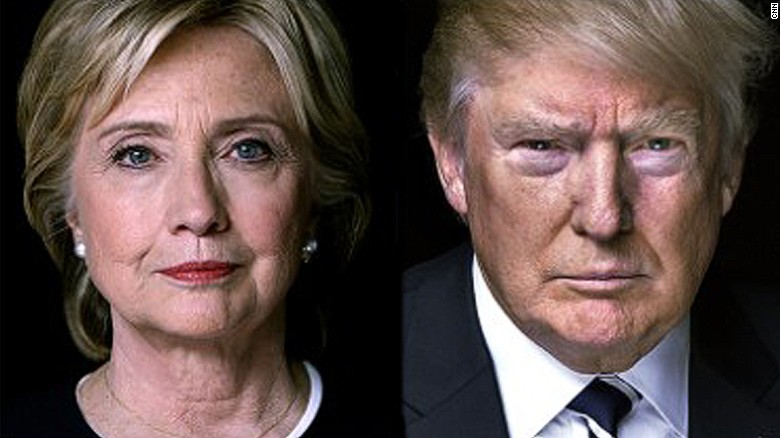What the Presidential Candidates Mean for your Tuition Bill
August 30, 2016
College students everywhere feel the bite of the cost of not only paying for school, but also managing income. Regarding the 2016 election for the next commander in chief, students get to choose between some famous names both inside and outside of politics for Election Day.
Because of this, the views held by the two parties have not been more vastly different in recent memory. I have done my homework and dug into the details of what our Democratic and Republican nominees express, so all of the Cal Times readers can make a more informed decision. Plus, you really do get to have an impact for Election Day.
This may be in the “opinion” section, but this really is news. Dig in to see how our candidates effect college students this campaign season.
Democratic Party
Nominee: Hillary Clinton
Private: Clinton Foundation member, Walmart, Inc. Board of Directors.
Public office: Former First Lady of Arkansas, First Lady of the U.S., United States Senator (New York), Secretary of State.
Tagline: “Fighting for Us.”
Hillary Clinton’s New College Compact aims to assist in eliminating tuition for four-year public colleges and universities, similar position to fellow candidate Bernie Sanders.
State governments would need to increase funding to colleges and work with them to cut costs.
In other words, some governors have cut funds to higher education in order to prevent further government spending, Pennsylvania included. Pennsylvania factors into that equation with former Gov. Tom Corbett (a conservative Republican who served from 2011-15).
Clinton’s news release did not detail how individual state governments would adopt these ideas into their own state systems or how Clinton would/could work with Republican-controlled state governments.
In terms of demographics, the compact will place a focus on grants for low-and middle-income students.
Stephanie Formas, one of Clinton’s communication volunteers, was not immediately able to clarify more details on “low-and-middle income students.”
The campaign also aims to implement a type of income-based payment for student loan; the purpose of this being to assist in helping students pay back loans.
According to the news release on the New College Compact, the campaign also aims to extend the American Opportunity Tax Credit, ensuring that middle-class families avoid a tax increase of up to $2,500 per year. Hillary Clinton’s plan will attempt to extend the American Opportunity Tax Credit.
As for the cost of this College Compact, the plan costs around $350 billion over the course of 10 years. It will be fully paid for by closing tax loopholes for the most fortunate.
Clinton campaign volunteer Stephanie Formas did not clarify on who the “most fortunate” are in the preceding paragraph.
More than half of the total will be in grants to public, four-year colleges and universities; an example being California University of Pennsylvania. These grants will seek to ensure students do not need excessive loans for tuition and will also help reduce the costs at four-year public colleges.
Additional highlights of the Clinton campaign will provide free tuition at community colleges and support private colleges as well.
Republican Party
Nominee: Donald Trump
Private: Elizabeth Trump and Son Co. real estate developer, chairman and president, The Trump Organization, former host of NBC’s “The Apprentice.” Chairman of several other businesses.
Public office: None.
Education: Fordham University; University of Pennsylvania, Wharton School of Business (B.S.)
Tagline: “Make America Great Again!”
After clicking the “Issues” tab on Trumps’ campaign site, Trump says in a video clip: “It is a disaster that Washington wants to regulate your child’s education.” The only solution Trump provided to this was: “It also has to be managed from a local standpoint, a locally controlled education.” He also believes that “third world countries are ahead of us, despite all the money we spend on it. It’s a disaster. We are 28th in education in the world,” he said.
In the video, Trump did not cite the “third world countries” quip on which he spoke. There are no other connections to the “28th in education” figure.
A Trump spokesperson could not be reached directly by this publication regarding his specific views on education, or the “28th” number in the above paragraph.
Even though his campaign was not available for commenting, “Slate” magazine quoted a July 2016 source on a Trump campaign executive’s deeper education attitudes.
“Proposals currently being prepared would upend the current system of student loans, force all colleges to share the risk of such loans,” according to source Sam Clovis of the Slate article, a co-chair of the Trump campaign’s policy center, which means he comes up with ideas about stances on issues for Trump’s campaign.
In other words, while Trump’s policy co-chair is not able to provide any educational details, Clovis is in the works to define Trump as a “new” Republican in America on some policies which Trump has struggled on holding onto a policy, such as healthcare and education.
If the new positions on education will be as Clovis said they are in July, this will allegedly push Trump’s ideas and make them appeal to other people, rather than his existing audience. In other words, Clovis suggests that colleges should be affected by the student loan process. According to the “Slate” article, he says that colleges “should be impacted” if a student misses his or her loan payment after graduating.
However, Clovis never elaborated what this “impact” means.
For Trump’s audience, this could allow a chance for students to obtain education without increasing national government spending, national government spending, such as his Democratic rival’s agenda aims to do.







Pat Newman • Sep 2, 2016 at 3:33 pm
Great job son!!!!!